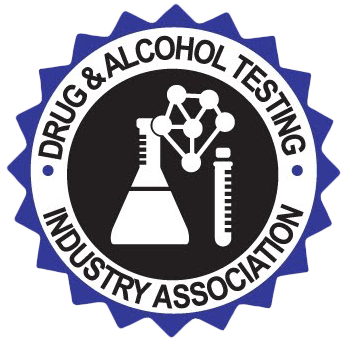Drugs
Test ID Drug/Metabolite Detection Level
COC (Cocaine, Crack) Benzoylecgonine 300 ng/mL
OPI (Heroin, Some Pain Medications, Opium) Morphine 300 ng/mL
MET (Crystal Meth, Crank, Ice) d-Methamphetamine 500 ng/mL
THC (Marijuana, Hash, Weed, Pot) 11-nor-79-Tetrahydrocannabinol-9-carboxylic acid 50 ng/mL
AMP (Prescription Stimulants, Speed, Diet Pills) d-Amphetamine 1000 ng/mL
PCP Phencyclidine 25 ng/mL
BZO (Prescription Depressants, Downers) Oxazepam 300 ng/mL
BAR (Prescription Downers, Sedatives) Secobarbital 300 ng/mL
BUP (Suboxone®,Subutex®) Buprenorphine 10ng/ML
MTD Methadone 300 ng/mL
MDMA (Ecstasy, E) 3, 4-Methylenedioxymethamphetamine 500 ng/mL
OXY (Prescription Narcotic Pain Killers,Oxycontin®, Percocet®, Percodan®) Oxycodone 100 ng/mL
TCA (Prescription Anti-Depressants) Nortriptyline 1000 ng/mL
COC: Cocaine derived from the leaves of the coca plant, is a potent central nervous system stimulant, and has been used as a local anesthetic. Cocaine use induces euphoria, confidence, and a sense of increased energy; these psychological effects are accompanied by increased heart rate, pupil dilation, fever, tremors, and sweating. Cocaine is generally smoked or administered intravenously or orally. Cocaine base can be smoked in the form commonly known as “crack”, which is likely to lead to dependence since the effect is more rapid and heightened. Cocaine is primarily excreted as benzoylecgonine and can generally be detected for 24–60 hours after cocaine use or exposure
OPI: Heroin, morphine and codeine are opiates that are derived from the resin of the opium poppy. Heroin is quickly metabolized to morphine. Thus, morphine and morphine glucuronide may both be found in the urine of a person who has taken only heroin. The body also converts codeine to morphine. Thus, the presence of morphine (or morphine metabolite) in the urine indicates heroin, morphine and/or codeine use. Generally, morphine and other opiates can be detected in the urine within 2 to 6 hours after use and remains detectable up to 3 days. However, the length of time following drug use for which a positive result may occur is dependent upon several factors including the frequency and amount of usage, metabolic rate, excretion rate, drug half-life, and the drug user’s age, weight, activity and diet.
MET: Methamphetamine (Crystal Meth, Crank, Ice, Glass, Speed) is a potent sympathomimetic agent with therapeutic applications. Methamphetamine use in acute higher doses leads to enhanced stimulation of the central nervous system and induce euphoria, alertness, and a sense of increased energy and power. Methamphetamine is excreted in the urine as amphetamine and oxidized as deaminated derivatives. However, 40% of methamphetamine is excreted unchanged. Thus the presence of the parent compound in the urine indicates methamphetamine use. Methamphetamine can be detected in the urine within 4-6 hours after use and for 3-5 days, depending on urine pH level.
THC: (Marijuana, Hash, Weed, Pot, Grass) THC use may impair short-term memory and inhibit learning capacity. It may also alter mood and sensory perceptions, cause loss of coordination, induce anxiety, paranoia, hallucinations, depression, confusion, and increased heart rate. A tolerance to the cardiac and psychotropic effects can occur. Long-term THC use may be associated with behavioral disorders. Withdrawal from marijuana use may produce restlessness, insomnia, anorexia, and nausea. Depending on the persons metabolism, weight and usage it can remain detectable from a week for occasional use to several weeks for heavy use.
AMP: (Prescription Stimulants) Amphetamine is chemically related to the human body’s natural catecholamines, epinephrine, and norepinephrine. It has therapeutic applications and is a potent sympathomimetic agent. Amphetamine use in acute higher doses leads to enhanced stimulation of the central nervous system and induces euphoria, alertness, reduced appetite, and a sense of increased energy and power. Generally about 30% of amphetamine is excreted unchanged in 24-hour urine and can be detected for up to 5 days.
PCP: Phencyclidine is an arychlohexylamine that is used as a veterinary anesthetic. It is used illegally as a hallucinogen, and is commonly referred to as PCP, angel dust, crystal cyclone, love boat, hog, or killer weed. PCP can produce lethargy, disorientation, and loss of coordination, visual distortion, euphoria, ataxia, and even coma. PCP can be taken orally, by nasal ingestion, smoking, or intravenous injection. It is metabolized in the liver and excreted through the kidneys. The half-life of phencyclidine is about three days.
BZO: (Prescription Downers, Valium, Xanax, Ativan) Benzodiazepines are anxiolytic drugs that are most widely prescribed and used as anti-anxiety agents. They are also used as hypnotics, muscle relaxants and anti-convulsants. Some metabolites of Benzodiazepines also exhibit pharmacological activities. Use of Benzodiazepines can result in drowsiness and confusion; it also increases the effects of alcohol and other central nervous system depressants. Psychological and physical dependence on benzodiazepines can develop if higher doses of the drug are given over a prolonged period. Benzodiazepines are taken orally or by injection. The drug is metabolized in the liver and excreted in the urine as the parent compound or as oxazepam (in the case of chlorodiazepoxide and diazepam). Oxazepam is detectable in the urine for up to 7 days.
BAR: (Prescription Downers) Barbiturates are a class of central nervous system depressants. Phenobarbital has been used as a daytime sedative and extensively as an anticonvulsant. Phenobarbital is an example of long acting barbiturate derivative while Pentobarbital and Secobarbital are examples of short acting barbiturate sedatives. Barbiturate abuse can lead not only to impaired motor coordination and mental disorder, but also to respiratory collapse, coma and even death. Short acting barbiturates will generally be excreted in urine as metabolites, while long acting barbiturates will primarily appear unchanged. Barbiturates normally remain detectable in urine for 4 to 6 days after use (up to 30 days for Phenobarbital).
BUP: Buprenorphine is a potent analgesic often used in the treatment of opioid addiction. The drug is sold under the trade names Subutex, Buprenex, Temgesic and Suboxone, which contain Buprenorphine alone or combination with Naloxone HCL. Therapeutically, Buprenorphine is used as a substitution treatment for opioid addicts. Substitution treatment is a form of medical care offered to opiate addicts based on a similar or identical substance to the drug normally used. In substitution therapy, Buprenorphine is as effective as Methadone but demonstrates a lower level of physical dependence. It can be detected for approximately 2 to 4 days in urine.
MTD: Methadone is a synthetic analgesic drug that is originally used for the treatment of narcotic addiction. Methadone use induced psychological effects such as analgesia, sedation and respiratory depression. Overdose of methadone may cause coma or even death. Methadone is taken orally or intravenously and is metabolized in the liver. The major route of methadone excretion is in the urine. The effects of methadone last up to 24 hours after use and can be detected in the urine up to 14 days. The length of time following drug use for which a positive result may occur is dependent upon several factors including the frequency and amount of drug, metabolic rate, excretion rate, drug half-life, and the user’s age, weight, activity and diet.
MDMA: 3, 4-methylenedioxymethamphetamine (MDMA) The drug has street names that include "Ecstasy, XTC, Clarity, Essence and Adam" and is a synthetic drug that is chemically related to the amphetamine family of compounds. MDMA has been available as a street drug since the 1980s; however, since the 1990s its use has increased, particularly among teenagers and young adults. MDMA is typically available in tablet form containing appropriately 60-150 milligrams of MDMA. The common method of use is oral ingestion, although the powder form can be snorted and occasionally smoked. MDMA has properties of both stimulants and hallucinogens. The effects of the drug last up to 6 hours after oral ingestion. The adverse effects include elevated blood pressure, increased heart rate, hyperthermia, dehydration, anxiety, paranoia and insomnia. The detection period of MDMA in urine is 1-3 days for single use and up to 5 days for heavy use.
OXY: (Percocet, Oxycontin, Percodan) Oxycodone is a synthetic analgesic drug administered orally for the relief of pain. The major route of oxycodone excretion is in the urine. The effects of oxycodone last up to 4 hours after use. The length of time following drug use for which a positive result may occur is dependent upon several factors including the frequency and amount of usage, metabolic rate, excretion rate, drug half-life, and the drug user’s age, weight, activity, and diet.
TCA: Tricyclic antidepressants (TCAs) are a type of prescription drugs used for the treatment of depressive disorders. Tricyclic Antidepressants consist of two main chemical classes. The tertiary amines boost serotonin levels and are usually prescribed for insomnia, irritability and overstimulation; these include amitryptiline, imipramine, trimipramine and doxepin. The secondary amines, which include nortryptiline, desipramine and protryptiline, enhance norepinephrine levels and are prescribed for fatigue; withdrawal and inertness.TCA abuse can result in respiratory depression, convulsions, blood pressure deviation, severe cardiac conditions, and coma. TCAs are taken orally or sometimes by injection. TCAs are excreted in the urine mostly in the form of metabolites for up to ten days.
Tramadol: (marketed as the hydrochloride salt by Janssen Pharmaceutica as Ultram, and as generics) is used to treat moderate to moderately severe pain. It has two different mechanisms. First, it binds to the mu opioid receptor. Second, it inhibits the reuptake of serotonin and norepinephrine.
Tramadol is a centrally acting atypical opioid analgesic with additional serotonin-norepinephrine reuptake-inhibiting effects. It is marketed as a racemic mixture of both R and S stereoisomers. This is because the two isomers complement each other's analgesic activity. It is often combined with paracetamol as this is known to improve the efficacy of tramadol in relieving pain. Tramadol is an atypical opioid because it is a serotonin-norepinephrine reuptake inhibitor of and, by itself, a fairly weak μ-opioid receptor agonist. Tramadol is metabolised to O-desmethyltramadol, which is a significantly more potent opioid with additionalnorepinephrine reuptake-inhibiting properties, making it analogous to tapentadol. When taken as an immediate-release oral formulation, the onset of pain relief usually occurs within about an hour.



